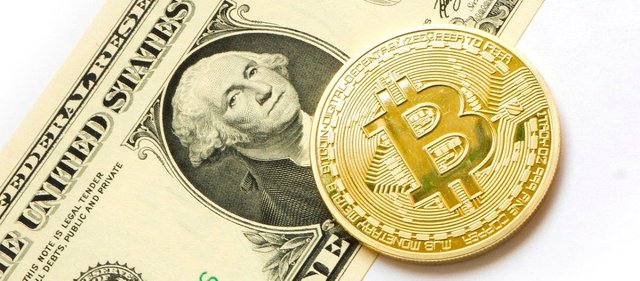Bitcoin and inflation in 2021

Ever since its conception, Bitcoin has been advertised as a safe-haven asset.
In the event of an economic downturn, Bitcoin’s price is expected to climb because of its limited supply.
The COVID-19 pandemic in 2020 put this theory to the test where Bitcoin shone like a diamond in the rough, proving its resilience even to the most sceptical investor. Looking back at the events of 2020, let’s find out what’s next for the world’s top cryptocurrency and analyze its relationship with inflation in 2021.
Bitcoin inflation 101
Bitcoin has a fixed maximum supply of 21 million coins and today, around 18 million have already been mined. Once this number is depleted, no new Bitcoin will ever be mined again. This scarcity is what makes Bitcoin similar to gold and a hedge against inflation.
No central bank can just release more Bitcoin into the market. Instead, new coins are minted through the proof-of-work protocol called ‘mining’. A miner solves complex mathematical problems before they can verify a transaction and upload it onto the blockchain.
In exchange for their hard work, they receive a block reward that’s now worth 6.25 BTC. This process doesn’t only secure the Bitcoin network, but it also ensures that demand matches the outflow of newly minted coins.
Bitcoin halving
Now, what if the demand is too high that more and more Bitcoins are entering the market? Bitcoin halving occurs. For every four years or 210,000th block uploaded on the blockchain, the block reward received by miners is cut in half to reduce the supply of newly minted coins and curtail Bitcoin inflation.
Halving is a deflationary precaution written in Bitcoin’s code. With less supply, Bitcoin’s price is projected to climb higher. This proved to be true in the last two halvings that occurred in 2012 and 2016 when the reward was reduced to 25 BTC and 12.5 BTC, respectively. In both halvings, the price increased over 200% after one year, with the latter seeing the price climb to as high as US$2,526 in 2017.
The third halving occurred last May 2020 and its long-term effect is yet to be seen. Though it hasn’t even been a year, Bitcoin has since climbed to a historic new all-time high (ATH) at US$61,000 on March 13. That’s almost 250% higher than the US$20,000 ATH in 2017.
Hedge against inflation
Considering Bitcoin’s scarcity and deflationary precaution, it’s deemed more as a store of value rather than a medium of exchange. The cryptocurrency is also considered by many as a hedge against inflation because of its fixed limit. With all this taken into account, it’s no wonder that numerous investors flocked over to Bitcoin in 2020 during the COVID-19 pandemic when economic activity around the world came to a screeching halt.
The US government, COVID-19 pandemic and the economic crisis
Following the economic crash brought on by the nationwide lockdown in the US, the Federal Reserve launched monetary policies that kept interest rates near zero and allowed more money to be printed. Over US$3 trillion have been printed by the US Federal Reserve in the past year alone to cover stimulus packages.
All this was done to stimulate the economy. Keeping interest rates low encourages people to borrow and spend, effectively jumpstarting economic activity.
However, with the increased supply of US dollars in circulation, its devaluation followed suit. Inflation rates are expected to climb sooner or later once the demand starts racking up. With high demand and low supply comes high prices and a high inflation rate.
Is crypto a hedge against inflation?
According to the US Federal Reserve, inflation pertains to the increase in the price of goods and services over time. However, the total amount of money in circulation also plays an important role in defining inflation.
Cryptocurrencies remove the problem of inflation by limiting their supply. Most cryptos have a fixed limit and their own protocols on adding newly minted coins to the market. Since cryptocurrencies have a set limit, their price can only go up as its supply becomes scarcer, making it a hedge against inflation. On the other side of the spectrum is fiat currencies like the US dollar whose value can only drop over time as supply increases.
As the federal government continues to print money and keep interest rates low, the US dollar’s further devaluation and a high inflation rate can only be expected. The rise of inflation rates can be expected and to prevent losing their assets, institutional investors are looking for alternative investments such as crypto which acts as a hedge against inflation.
Are inflation rates increasing?
The Federal Reserve said that the inflation rate hovered around 1.5% in 2020, which is well below the target of 2%. This means that even with a low-interest rate, people are not borrowing and spending. Instead, they are accumulating money.
With no high demand, there’s no reason for prices to increase and the inflation rate to climb.
However, the low inflation rate did not stop institutional investors from investing in crypto. That’s because they’re using Bitcoin as a hedge against future inflation. Even if the inflation rate is stable right now, it won’t remain low forever. It’s still expected to rise once the pandemic subsides and the public becomes more active in purchasing goods and services again, resuming economic activity.
What to expect from Bitcoin and inflation in 2021
As the world moves forward in 2021, monetary policies and consumer activity will determine how low or high the inflation rate will go. The demand may rise and prices may start climbing with more people coming back to the labour force. At this point, more and more investors will look for bitcoin as a last-minute solution, causing its price to drive up even more.
Thanks for reading and waiting for your thoughts.
Cheers,
Karl
Bitcasino.io